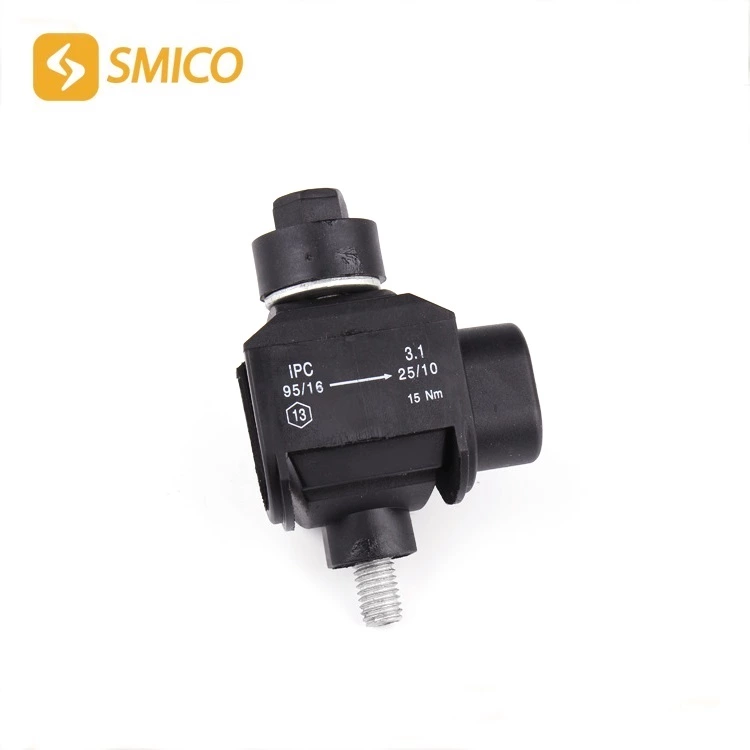5 Key Factors To Consider When Choosing An Insulation Piercing Connector Interface Type!
The selection of insulation piercing clamp interface type is a crucial part of electronic device design, which is directly related to the compatibility, performance, cost and user experience of the device. This article is Xinpengbo Electronics' explanation of several key factors to consider when choosing ipc cable connector port type!
1. Device compatibility
Existing device interface: First, you need to ensure that the selected ipc insulation piercing connector interface is compatible with existing devices. For example, if the device is mainly used to connect to traditional computers, then choosing piercing cable connector with USB Type-A interface may be appropriate.
Future device interface: At the same time, you should also consider the device interface that may be used in the future to ensure the long-term availability of piercing electrical connectors.
2. Usage scenarios
Indoor and outdoor: If you use mobile devices outdoors and need fast charging and efficient data transmission, then the USB Type-C interface may be more able to meet the needs. In indoor or office environments, the USB Type-A interface may be sufficient.
Special environment: For industrial equipment or special application environments, such as high temperature, high humidity, dust, etc., you need to choose a piercing wire connector interface with corresponding protection level and weather resistance.
3. Performance requirements
Data transmission speed: For applications that require high-speed data transmission, such as high-definition video transmission or large-capacity file transfer, wire piercing connector interfaces that support high-speed data transmission should be selected, such as USB 3.1, Thunderbolt, etc.
Power transmission capability: If the device requires high-power charging or power supply, then a connector interface that supports high-power transmission should be selected, such as USB Power Delivery (USB PD).
4. Cost considerations
Initial cost: Different types of connector interfaces may differ in cost. The most suitable connector interface needs to be selected based on the project's budget and cost-benefit analysis.
Long-term cost: In addition to the initial cost, the long-term maintenance, replacement and upgrade costs of the connector also need to be considered. Choosing a connector interface that is easy to maintain, durable and compatible can reduce long-term costs.
5. Market trends and future development
Market mainstream interface: Pay attention to the mainstream interface types and trends in the market. Choosing a connector interface that is widely accepted and used can improve the compatibility and market acceptance of the device.
Future development direction: Consider the future direction of technology development. Choosing a connector interface with potential and development prospects can leave room for future upgrades and expansions of the device.
Analysis of specific interface types
USB Type-A: The most widely used interface, commonly found in computer hosts, chargers and other devices. Suitable for connecting to traditional computers or older peripherals.
USB Type-B: A square interface, often found on peripherals such as printers and scanners. If you often need to connect to such devices, it is appropriate to choose a connector that supports the USB Type-B interface.
USB Type-C: An interface that has developed rapidly in recent years and has many advantages. It has the characteristics of being pluggable in both directions, making it more convenient to use. In addition, it also supports higher power transmission and faster data transmission speeds. Suitable for devices that require fast charging, high-speed data transmission or convenient plug-in and unplug experience.
Micro USB: Small and flexible, it was once the standard interface for mobile phone charging. However, with the popularity of the Type-C interface, Micro USB has gradually withdrawn from the mainstream market, but it can still be found in some low-end or special-purpose devices.
HDMI: High-definition multimedia interface, used to transmit high-definition video and audio signals. Suitable for connecting devices such as TVs, monitors, Blu-ray players, game consoles and personal computers.
RJ-45: Ethernet interface, used for data transmission between network devices. Suitable for computer networks, security systems, smart homes and other scenarios.
Summary: When choosing the type of electronic connector interface, you need to consider multiple factors such as device compatibility, usage scenarios, performance requirements, costs, market trends and future development. By comprehensively evaluating these factors, you can select the connector interface type that best suits your project needs, providing strong guarantees for the performance and user experience of electronic equipment.

